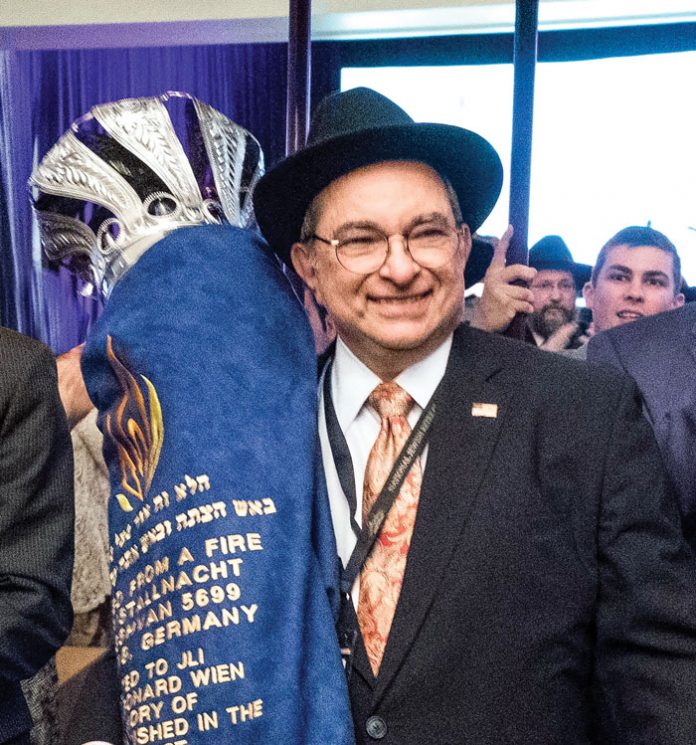There is a Torah on display at the Yad Vashem Holocaust Museum. Encased behind glass, the discolored scroll looks brittle, as if it would fall apart if touched by human hands. It has a story, of course. In 1998, the University of Leipzig, which had been severely damaged by allied bombings during WWII, was undergoing renovations when one of the workers let out a shout: hidden between the beams of the library roof were a number of Torah scrolls.
The scrolls had suffered terrible decay from prolonged exposure to damp and humidity, and most of them had to be buried. Only one of them was in relatively good condition, and it is this sefer Torah that was shipped to the museum and put on display.
How had these sifrei Torah come to be hidden in the roof of a German university?
Decades earlier, a man named Chaim Israel, who lived in Leipzig, received an anonymous call. The caller, who was never identified, told him that violence was going to take place in shuls throughout Germany. Chaim then went to his shul, the Broder synagogue in Kailestrasse. A quick decision was made to remove and hide all but one of the sifrei Torah, just in case the caller was right.
Amid those fearful, uncertain days in Germany, the identity of the person willing to hide the sacred scrolls remains a mystery, but it happened not a moment too soon. It was November 9, 1938, and that very night was Kristallnacht.
During the next 48 hours, 7,000 Jewish schools and businesses were vandalized, 1,300 shuls were burned, 30,000 men were arrested, and 236 Jews were murdered. When it was all over, the shattered glass storefronts carpeting the streets of Germany gave that day its name: Kristallnacht, the night of broken glass. The Broder shul was completely destroyed, and its lone remaining sefer Torah was shredded and burned.
The story is soul-stirring, but when I see a sefer Torah under glass, I cannot help but think that this is exactly what the Nazis wanted to do with all the articles of our faith that were left behind by their murdered owners: put them under glass at a museum for everyone to look at and no one to touch and hold.
I think of Abie Rotenberg’s timeless, tragic song of the sefer Torah found in Kiev after its Jews had been taken away. The sefer Torah was put in a museum and was seen as a “mere echo of the past.”
The lyrics include: And in a case of glass they put me on display, where visitors would look at me and say, “How very nice, how beautiful, a stunning work of art,” but they knew not what was inside my heart.
But there is another story, of another sefer Torah rescued from Kristallnacht. It’s a story with a similar beginning, but a very different ending.
This story also took place in Germany, on November 9, 1938, while the night rang with the sounds of glass shattering and the shouts of violent, looting mobs. The skies were heavy with thick smoke as shuls, schools and Jewish-owned businesses were burned.
The horrors of the night were coordinated by the Nazi Party. It was officially carried out by their paramilitary wing, but civilians joined in willingly, and the German authorities looked on without intervening. Also known as the November Pogroms, the destruction of Jewish property and holy objects was carried out at once, all over Germany.
In the small town of Fritzlar, sifrei Torah were unrolled in the streets, and Hitler Youth rode their bicycles over them. In Vienna, portions of the torn parchment were tied to Jews’ backs. In Frankfurt, Jews were made to throw the sacred parchment into the flames themselves, or be shot. In Berlin, Nazis danced around the flames as all the sifrei Torah they had fed into the bonfires turned to ashes.





















